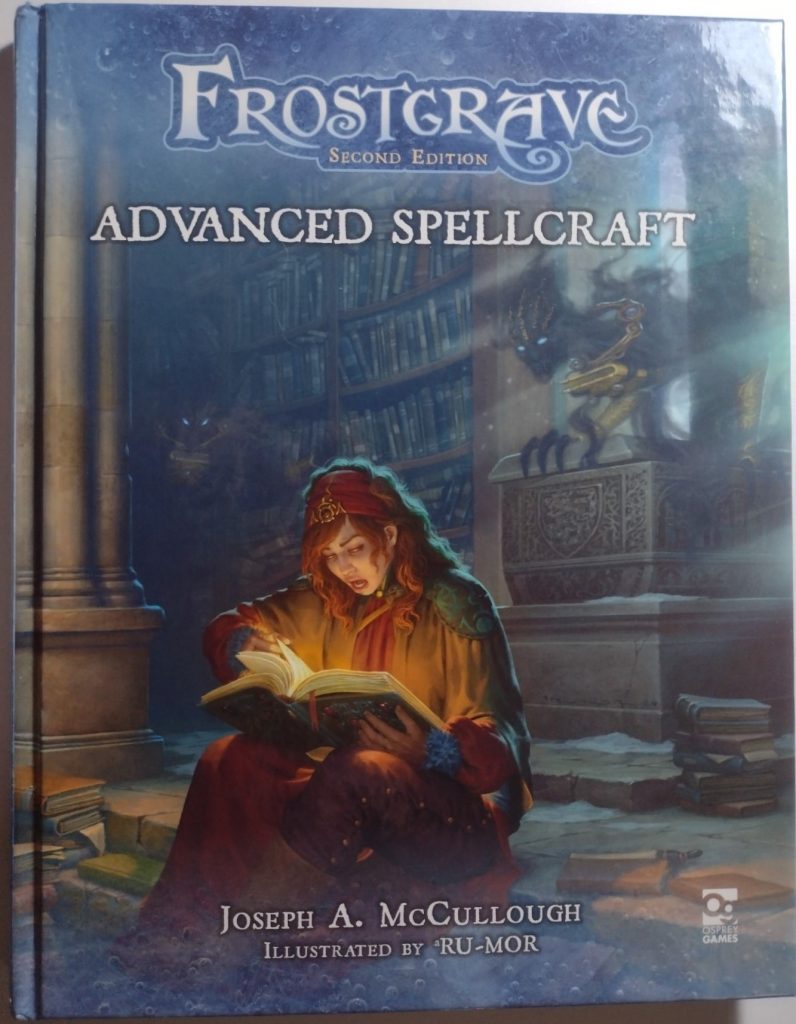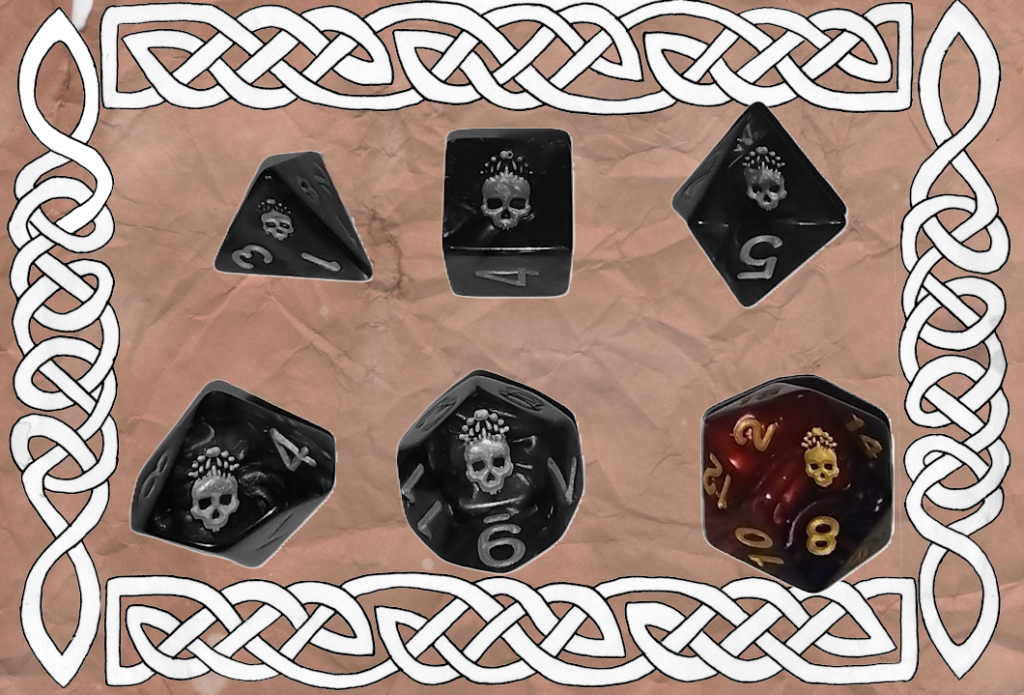
Marking and celebrating the 10th year of Frostgrave comes Advanced Spellcraft by Joseph Mc Cullough and published by Osprey. It is the largest of the Frostgrave supplements so far and apart from Frostgrave: Wizard Eye: The Art of Frostgrave the only one in hardback.
The look of the book
Like its predecessors Advanced Spellcraft is beautifully presented with a cover depicting a mage studying a magical tome with a look of surprise or perhaps building terror on her face while unbeknownst to her two whispy Book Wights approach from behind. Inside the text is liberally adorned with great photos by Kevin Dalimore, of miniatures painted by him and Paul Cubbin, and stunning artwork by aRu-Mor. The painting on page 27 is one of my favorites and is wonderfully creepy.
What’s inside?
The book opens with an introduction from Joseph. I always enjoy reading these because I always get the feeling that Joseph is as excited about playing his games as he is writing his books, so you know you are in good hands.
The book is themed around the rediscovered Bibliosepulchre of Felstad. This vast library-crypt was the resting place of ancient librarians who were entombed, each holding tightly to a rare grimoire. Chapter One details a range of eight optional spellcasting rules that you can add to your game. My favourites are the Casting Roll Criticals and Flourishes.
As the name suggests Casting Roll Criticals add an enhancement on a casting roll of twenty, a critical success or a detrimental effect on a roll of one, a critical failure.
The Flourishes are used for when a Wizard finds or purchases a grimoire of a spell that they already know, they can then use it to learn to cast the spell with an optional flourish, to achieve different effects albeit with a harder casting roll. These are a great addition to the game adding further depth and variety to the spells.
Chapter Two is the Codified Spell List. All the spells from the Frostgrave rule book are covered with Critical Success and Critical Failure effects and apart from one spell, two or more flourish effects. Additionally there are notes or FAQs for many of the spells listed.
Next is The Bibliosepulchre Campaign that consists of ten scenarios written for two players and recommended for experienced wizards as they are ‘extremely dangerous and include deadly monsters’, to quote the book, so will be suitably challenging if you have been playing Frostgrave for the last 10 years. The scenarios are playable in order but there is also a table for rolling for them randomly. Each scenario takes place in a section dedicated to one of the schools of magic from the Frostgrave rulebook. A nice touch is that the scenarios can be played with your normal Frostgrave terrain as the Bibliosepulchre reflects the city and also many areas would be collapsed ruins. Ideally though you might want to make some book shelves, lecterns and other accoutrements found in libraries. I will admit to not having read through all the scenarios, mainly because I like to read them in sequence of playing them, if you get what I mean, and I haven’t had the time yet.
Chapter Four details thirty nine new treasure items that can be found in the Bibliosepulchre. After each scenario one treasure token can be exchanged for a roll on the Bibliosepulchre Treasure Table. There is a huge range of magical items detailed here and a note is made that due to their rarity none of them should be available to purchase which will keep them as a great incentive to play the scenarios.
The final chapter details fourteen new creatures that may be encountered within the Advanced Spellcraft scenarios. There is of course a random encounter table and details of new creature traits not found in the main rulebook.
Conclusion
I have to say that Advanced Spellcraft is a really great supplement for Frostgrave and adds so much to the games. I haven’t gone into page by page detail in this review, partly to keep the review to a reasonable length, and partly as doing so would feel a little like giving out spoilers. If you enjoy Frostgrave, go and buy the book or the PDF, I don’t think you will be dissapointed! I’m giving Advanced Spellcraft a d20 in the miniature battles rating scheme.


Leave a Reply